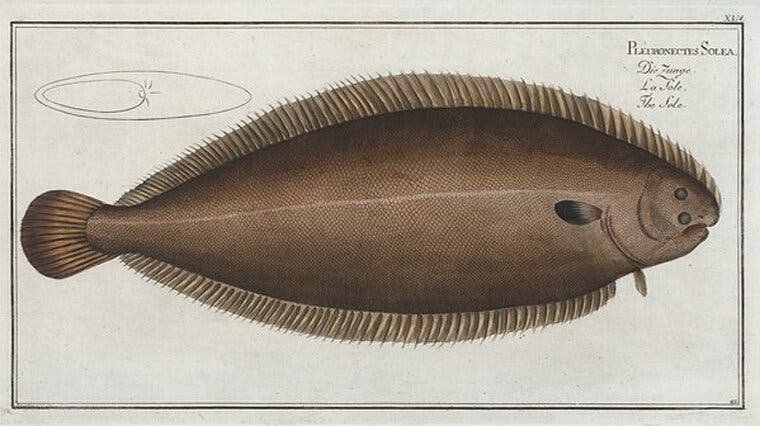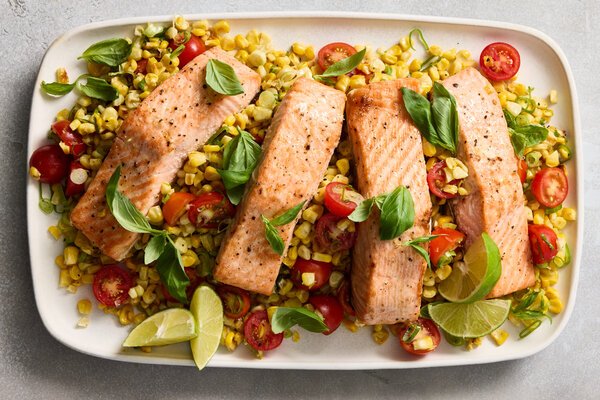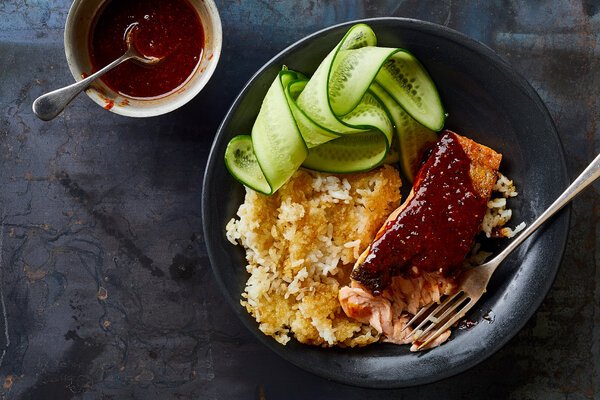Learn how to cook sole meunière, the dish that made Julia Child fall in love with French food.

Make sole meunière, a delicate dish, finished with brown butter, part of your cooking repertoire.Francesco Tonelli for The New York Times
[This article was originally published on Feb. 14, 2017.]
Here is the dish that made Julia Child fall in love with French cuisine: delicate fish fillets, lightly sautéed and covered with browned butter. She declared her first bite “a morsel of perfection.” Once you have had sole meunière, you will see why. This guide is part of The New Essentials of French Cooking, the 10 definitive dishes every modern cook should master.
The French excel at exquisitely wrought and technically challenging fish dishes, like bouillabaisse and lobster Thermidor. However, they are just as enamored of simpler recipes that focus on preserving the pristine beauty of their seafood. Sole meunière is a perfect example.
To prepare it, sole, a succulent, flat white fish, is pan-fried in butter until crisp-edged and tender, then served with brown butter pan sauce, a sprinkling of parsley and a wedge of lemon. (The term meunière means in the style of the miller’s wife, and refers to the flour in which the fish is dredged before frying.) Except for the browning of the butter, the ingredients are kept in their most elemental form. Yet together they create a dish of incomparable harmony and depth.
In its most traditional presentation, sole meunière is made with the whole fish, then filleted tableside. You can still find it served that way at old-school French restaurants all over the world. But for the most part, home cooks use sole fillets, which makes the process faster and easier — and only slightly less flavorful and juicy than when the fish is cooked on the bone.
Unlike a lot of classic French cuisine, sole meunière requires almost no advance preparation and very little time at the stove. It is one of the quickest ways to get to dinner, and you probably already have flour, salt, pepper, butter and lemon on hand. All you need is a beautiful piece of fish.
That fish does not have be Dover sole, especially given that in recent years, its sustainability has become an issue (not to mention the fact that it is very expensive). Other flat, white, flaky fish will cook up nearly as well, and will taste delightful when pan-fried and smothered in brown butter. After all, there are very few things that wouldn’t.
A succulent fillet of white fish, pan-fried in clarified butter and served with a butter sauce.By Meg Felling
With over 100 cataloged preparations, sole is one of the most esteemed fish in French cuisine, and sole meunière is the signature dish. It is the plainness of the recipe that makes it seem at once universal and utterly French. Almost all coastal cultures have some version of lightly fried fish, but only in France is it covered in brown butter.

“Pleuronectes Solea, the Sole.”Courtesy of The New York Public Library
Little is known about how sole meunière came to be, though we do know that for at least the past century it’s been a specialty of Normandy. “Le Guide Culinaire,” by Auguste Escoffier, which was first published in 1903, lists several variations of the dish, including sole meunière with eggplant, with grapes, with cucumbers and with various kinds of mushrooms. However, it is likely that the dish is much older, since it is so very basic.
Sole meunière has long been an extravagance, a costly fixture on the menus of many fine French restaurants. That is because it is traditionally made with Dover sole, a flat fish with delicate and buttery white meat, which separates easily from the bones.
It is that combination of simplicity and luxury that makes it compelling. Elaborate adornments are not necessary, as was made clear in an edition of “Larousse Gastronomique” from the early 20th century: “Sometimes the serving of fish cooked à la meunière is decorated with slices, or half-slices, of lemon, rounds of radish, cutout pieces of beetroot and sprigs of parsley. This kind of ornament is quite useless and not at all in keeping with the recipe.”
Today most French cooks would agree that you need nothing more on top of your buttery sole than a lemon wedge and a hint of parsley. That is the easiest lesson you can learn from French cooking: When you have perfect ingredients, less is more.
-
Use a 12-inch skillet, which should be large enough to fit the length of your fish. A heavy-duty nonstick or well-seasoned cast-iron pan will help keep the fillets from sticking, making them easier to flip and keep whole. But a stainless steel pan is fine if you’re careful when flipping.
-
A tapered fish spatula makes flipping delicate fillets a bit easier, but any spatula will work.
How to make clarified butter.By Meg Felling
Sole meunière is the kind of recipe that moves quickly once you start cooking, so it’s best to give it your full attention. Have the ingredients ready before you begin.
-
Use good butter: European-style butter with a high fat content (at least 82 percent) works best here because it contains less moisture than regular butter.
-
If you don’t want to clarify your butter, use a combination of oil and regular butter instead. You will end up with a more neutral and less buttery flavor, but the recipe will still work. (If you decide not to clarify, then it is especially important to use that high-fat, European-style butter.) Or you could use ghee, which is basically clarified butter in which the milk solids have been allowed to brown before being removed. It has a lightly caramelized, nutty flavor.

Francesco Tonelli for The New York Times
-
Patting the fish dry before dredging helps the flour cling evenly to the fillet, rather than clump in the damp spots.
-
Season the fish itself rather than seasoning the flour. This gives you more precision and control over the seasoning.
-
In a classic sole meunière, white pepper is used partly for aesthetics. If you want to use black pepper, that’s fine.
-
Keep an eye on the fish: When it has finishing cooking, it should be opaque, tender and not too firm. Plunge your fork into the thickest part of the fillet. There should be no resistance. That’s how you will know it’s done.
-
Set your oven to its lowest temperature, and use it to keep the first round of fish warm. This is an easy way to make sure dinner comes to the table at the right temperature. Placing the just-cooked fish on a warm plate before it goes into the oven helps, too.

Francesco Tonelli for The New York Times
Sole meunière is the most basic of dishes to prepare, which makes it easy to swap the fish or augment the seasonings to suit your taste.
Fish
You don’t need Dover sole to make this dish delectable. Instead, look for local, sustainable, flaky, mild white-fleshed fillets with a mild flavor. Other varieties of sole (including winter sole and lemon sole), halibut and flounder will work well. Or try scrod, cod, hake, trout, salmon, bass, swordfish, sardines or blackfish.
Herbs & Spices
Add a pinch or two of minced sturdy herbs like rosemary, thyme or savory, or ground spices such as cumin, coriander, paprika or curry powder, to the brown butter as it’s simmering.
Vegetables
If you want to make the dish more substantial, add cooked vegetables to the pan with the butter. Diced sautéed cucumber, shallot or onion, wilted spinach, grated zucchini, cubed eggplant or mushrooms would all do nicely.
Garnish
For a slightly more elaborate garnish that won’t overwhelm the flavors of the dish, substitute other soft, leafy herbs for the parsley. Basil, tarragon, coriander and chives are good candidates. Other citrus, such as Meyer lemon, lime, grapefruit or sour orange wedges, can stand in for the usual lemon.






